Content
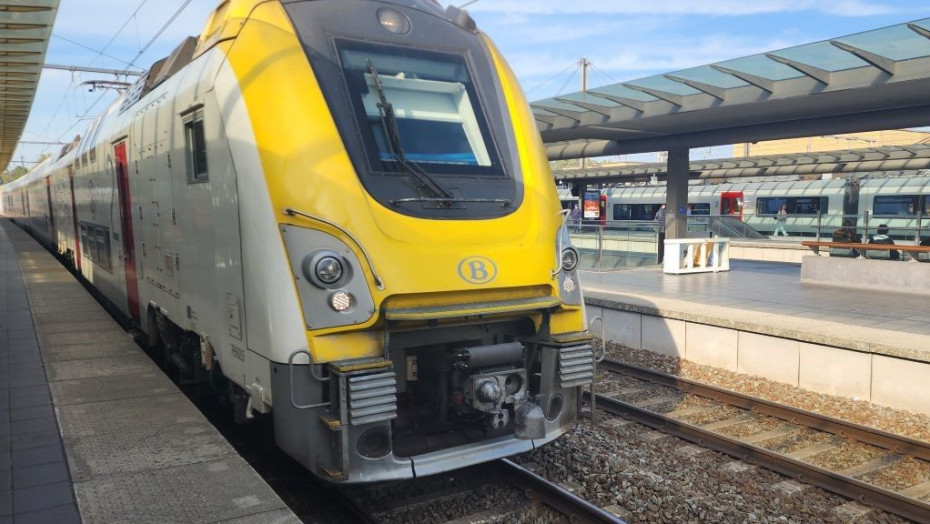
IC (Belgium)
Welcome to the guide to travelling by IC (InterCity) express services in Belgium.
Note that a wide variety of train types are used on these faster train routes in Belgium, but they have been consolidated into this overall guide as it can be tricky to know which specific train will be used for each departure.
Though we have split the types of train into groups, which has led to a use of technical details.
Share
At a Glance
Travel Pass Supplement
Rail Pass Reservation Fees
Reservations
Not Available
Time of Day
Day
Accessibility
Accessing the train
Wheelchair Spaces
Bikes Allowed
Train Specification
Attributes of the train
Has a Conductor
Country
Which country these trains operate in.
Belgium
Travel Passes
Eurail
Interrail
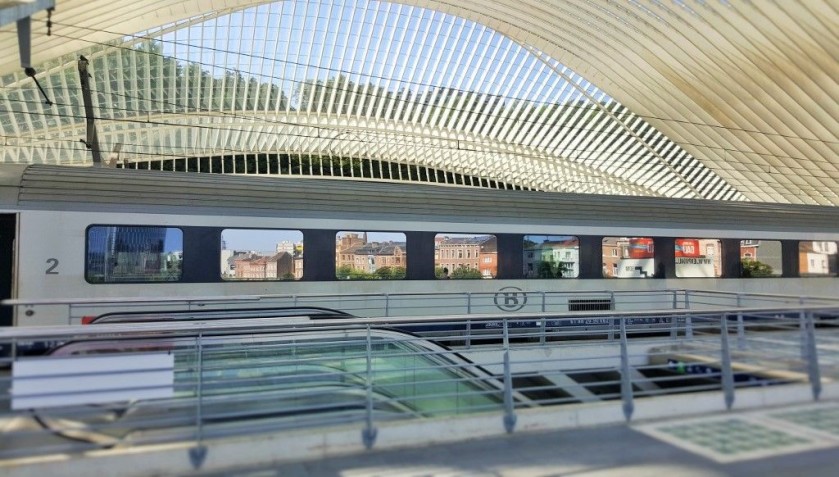
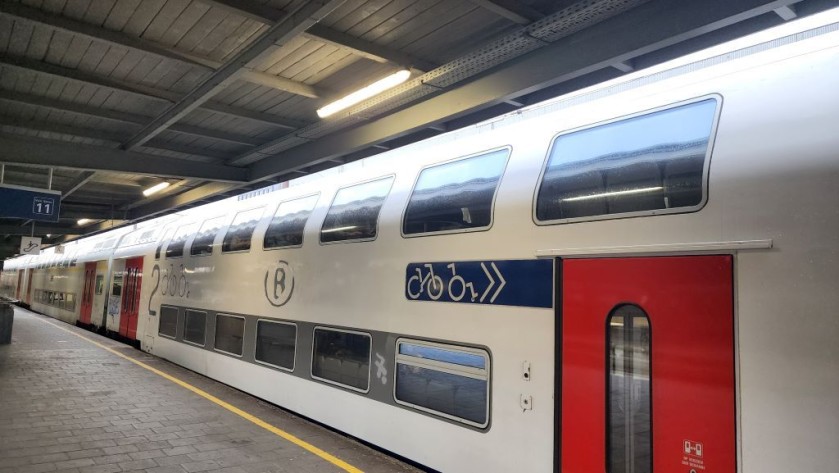
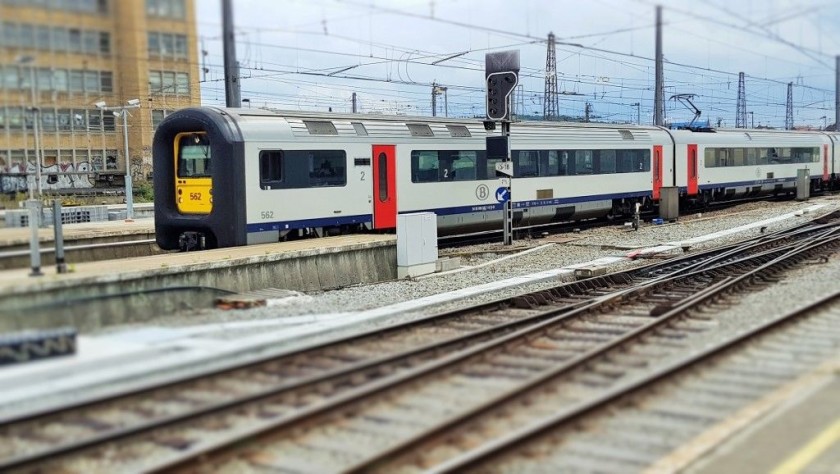
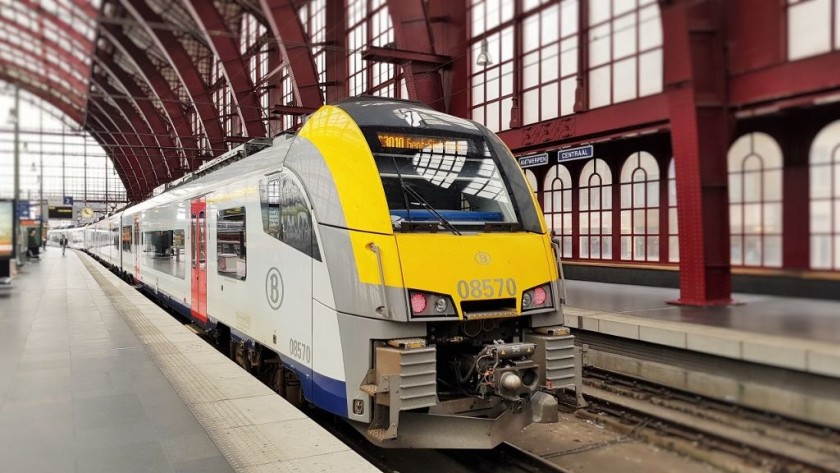
IC (Belgium) travel guide.
Belgian national rail operator NMBS/SNCB, uses a generic ‘Intercity’ branding for all of its express train services that skip stations.
However, on the sections of routes taken by IC trains that are furthest from Bruxelles, the trains can call at every station between some towns.
Some of these 'Intercity' services also cross the border into France on routes to and from Lille.
Something which all of the trains used for Belgian IC trains have in common is that the difference between 1st and 2nd class is comparatively marginal, because the 1st class seating saloons also have predominantly also have 2 + 2 seats across the aisle, instead of a 2 + 1 layout.
The different types of train:
A wide variety of trains are used for Belgian Intercity services, the IC branding is applied to the service/routes and NOT the train.
This has led to 'train-speak' being used to describe the different trains used on these Belgian IC services.
However, the types of IC trains used on each service/route are fairly interchangeable.
Though the E.M.U trains are always used on the routes to/from Lille and the double deck trains aren't usually used on the routes which don't serve Bruxelles/Brussels.
If you look up a journey on the SNCB travel planning service and click on the 'train details' link for each departure, you will see the type of train that will be used.
Though the trains that NMBS/SNCB uses for its Intercity services fall into these three broad categories:
1 - The double-deck trains:
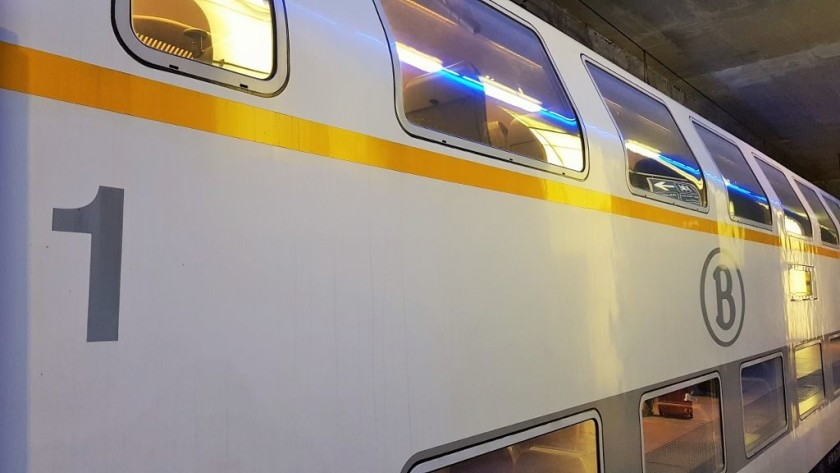
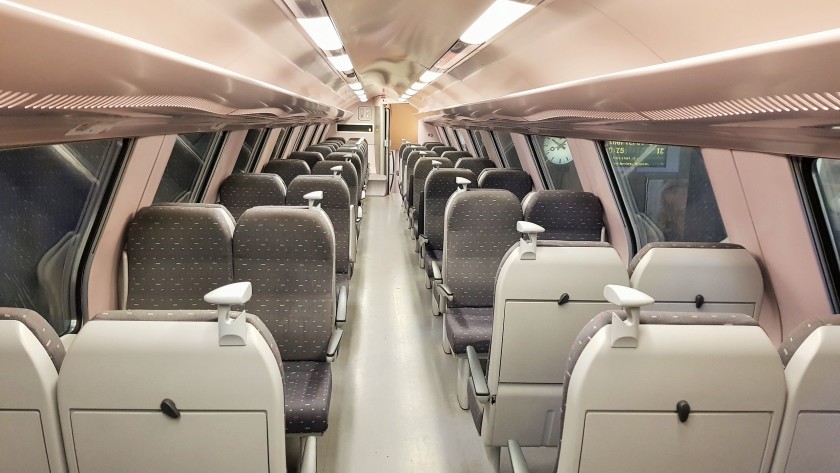
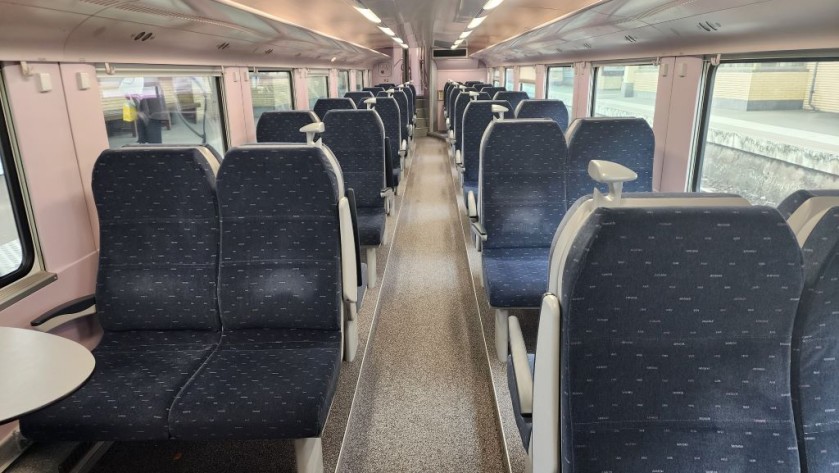
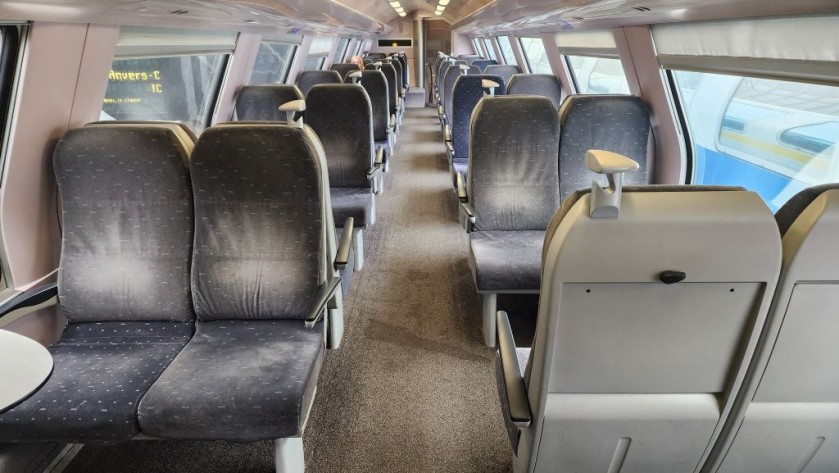
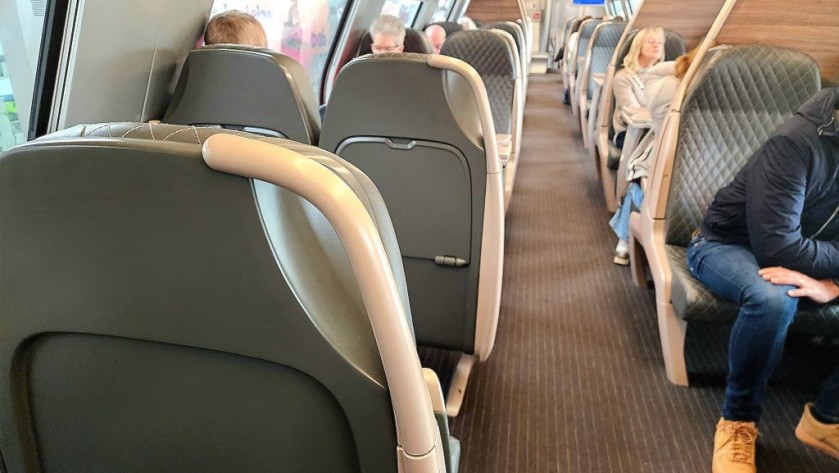
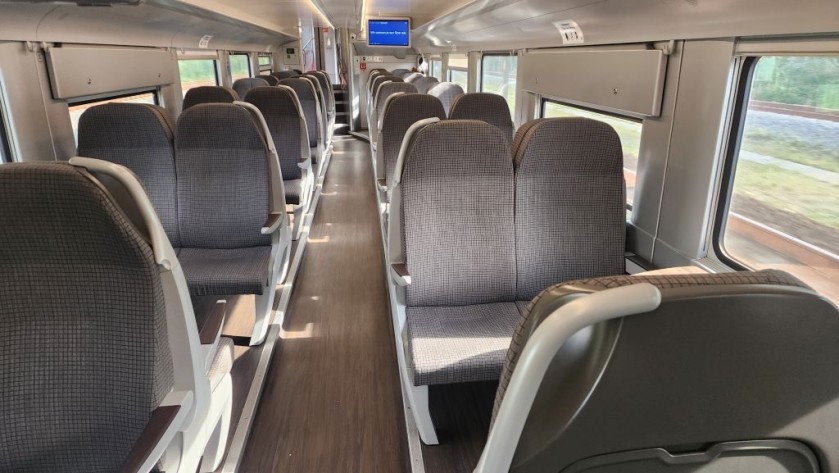
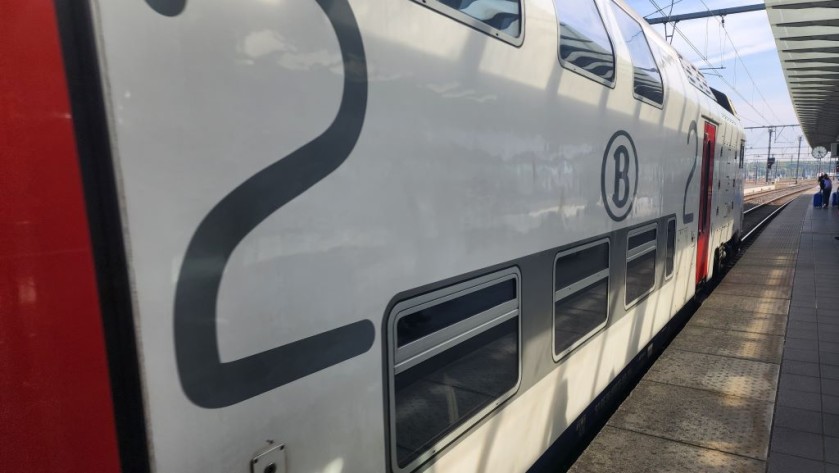
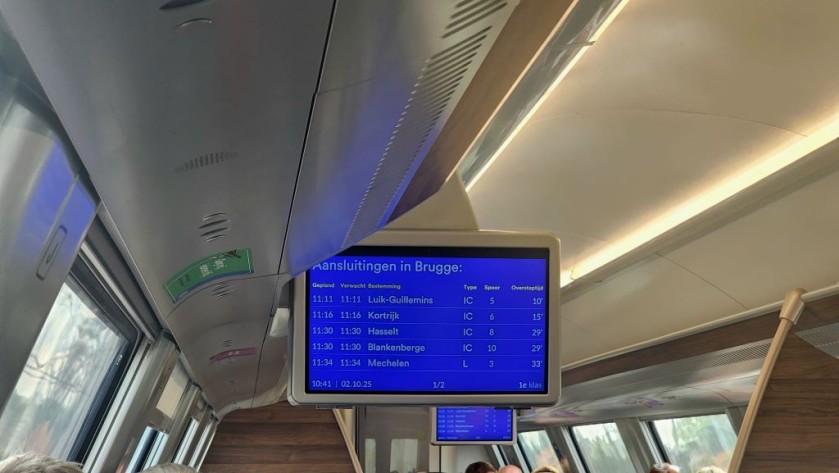
These trains have either older M6 coaches or smart new M7 coaches:
The M6 coaches can typically be found on these routes:
- Charleroi-Central – Braine - Brussels-South/Midi – Brussels-Central – Brussels-North - Brussels Airport – Mechelen - Antwerpen-Berchem – Antwerpen-Centraal
- Oostende - Brugge - Kortrijk - Brussels-South/Midi – Brussels-Central – Brussels-North - Brussels Airport
- Kortrijk– Brugge - Gent-Sint-Pieters – Brussels-South/Midi – Brussels-Central – Brussels-North – Leuven – Liège-Guillemins - Verviers-Central –Welkenraedt (some departures)
- Brussels-South/Midi – Brussels-Central – Brussels-North - Brussels-Luxembourg - Namur - Arlon - Luxembourg (some departures)
The M7 coaches can typically be found on these routes:
- Oostende - Brugge - Gent-Sint-Pieters – Brussels-South/Midi – Brussels-Central – Brussels-North - Leuven – Liège-Guillemins - Verviers-Central –Welkenraedt - Eupen
- Blankenberge - Brugge - Gent-Sint-Pieters – Brussels-South/Midi – Brussels-Central – Brussels-North - Leuven – Hasselt
- Knokke - Brugge - Gent-Sint-Pieters – Brussels-South/Midi – Brussels-Central – Brussels-North - Brussels Airport - Leuven – Liège-Guillemins
- Brussels-South/Midi – Brussels-Central – Brussels-North - Brussels-Luxembourg - Namur - Arlon - Luxembourg (some departures)
A key difference between the M6 and M7 coaches is that the latter have power sockets, with at least one socket available at each seating bay.
The M6 coaches have no power sockets at all.
Compared to the M6 coaches, the newer M7 coaches have higher ceilings, more legroom with opposite seats and more space for large luggage
on the Bruxelles ↔ Luxembourg route
According to the SNCB travel planning service a mix of coaches is typically used for the departures on this route, with the train formations including a mix of M6 and M7 coaches, along with some single deck I11 coaches - see below.
Boarding:
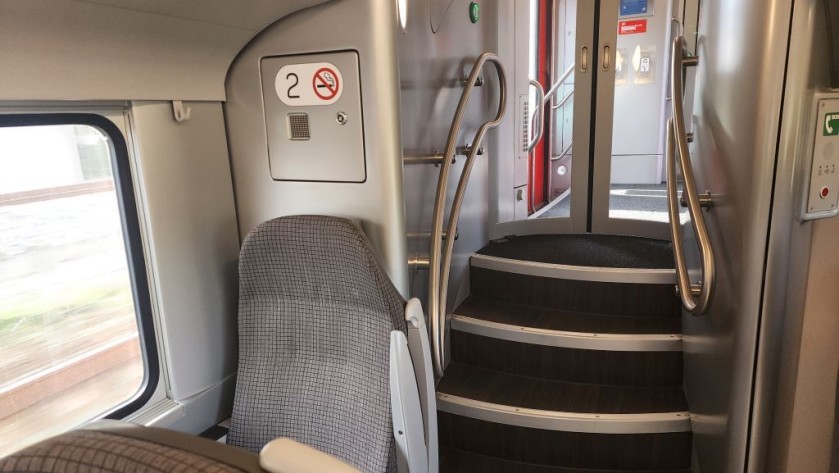
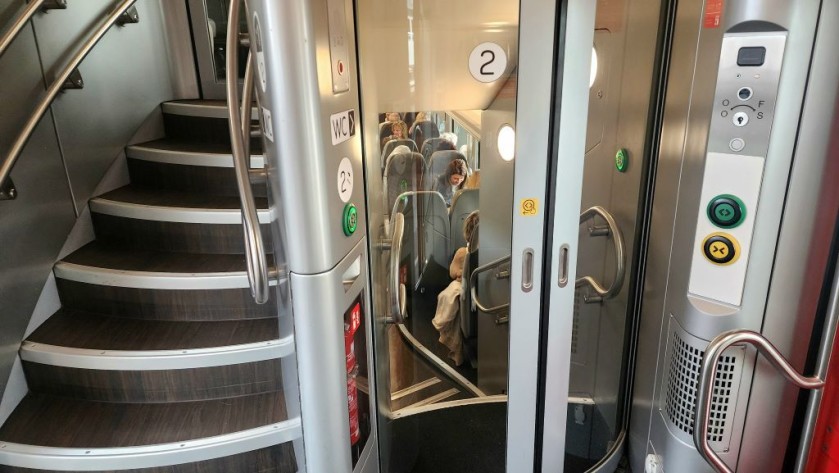
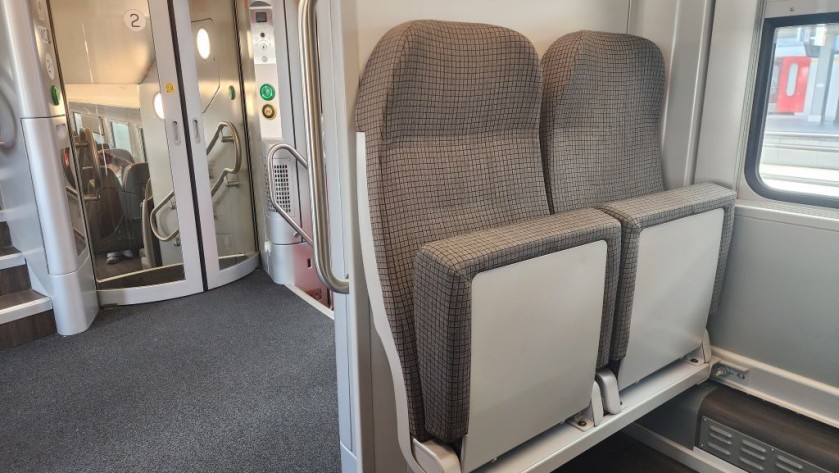
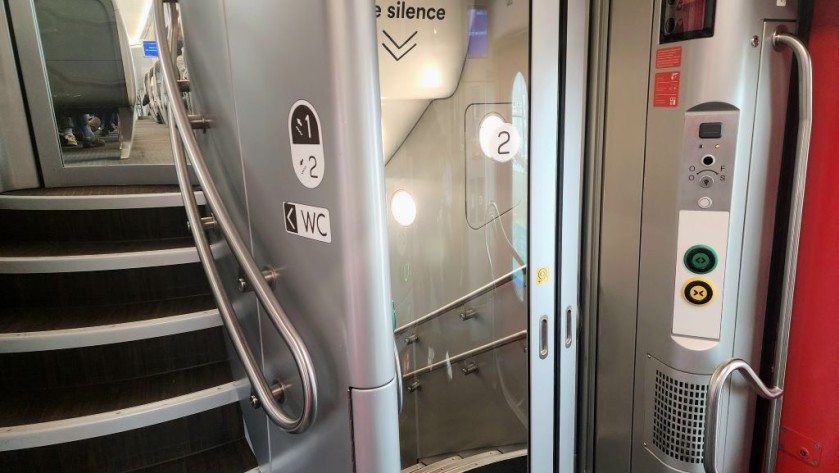
People tend to congregate by the electronic departure indicators on the voie/platform/track, so once you have confirmed that your train is next to arrive, move away from the crowds to increase your chances of finding a spare seat.
Whether a coach is 1st or 2nd class is indicated by numbers ‘1’ or ‘2’ on the side of the coaches - the use of a yellow band above the windows also indicates 1st class.
If you have a 1st class ticket and the 1st class coaches are not near to where you are waiting on the platform, board by any door and then walk through the train if need be.
Some coaches contain both 1st and 2nd class seats - on coaches that have both classes, glass doors usually separate 1st from 2nd.
On the M7 coaches all of the 1st class seating is on the upper decks.
Travellers with reduced mobility
The boarding area inside the doors is a couple of steps up from the platform.
The M7 coaches have been criticized for a larger then usual gap between the platform and the first step
Though if a train isn't exceptionally busy, having to use the stairs to access the lower and upper deck seating saloons can be avoided.
There are seating bays by the doors, which travellers who don't have impaired mobility are encouraged to avoid.
2 - The loco-hauled single-deck trains:
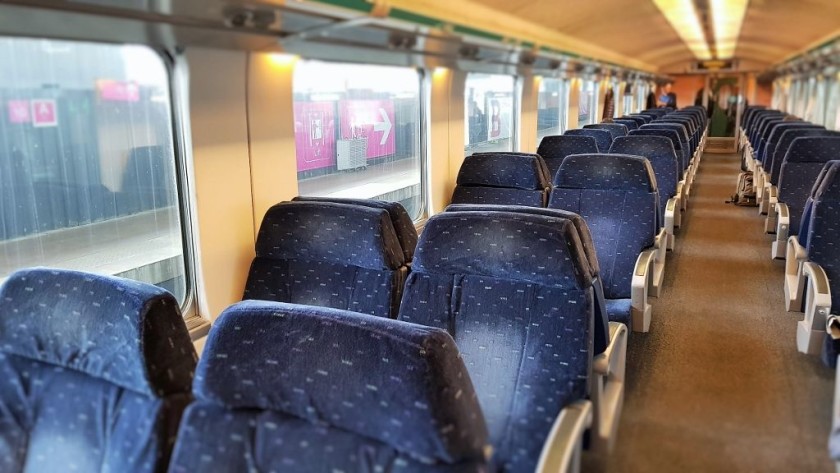
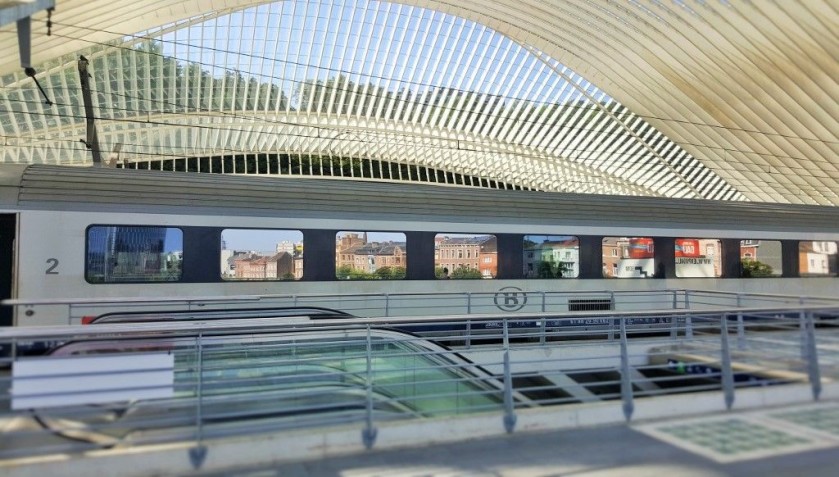
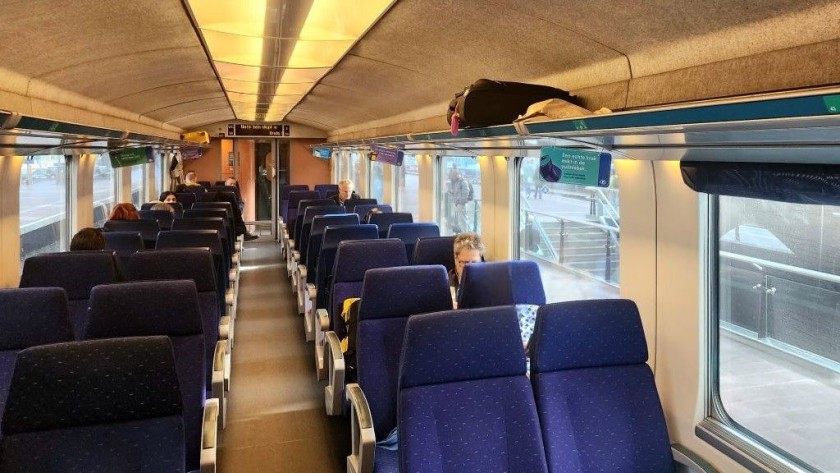
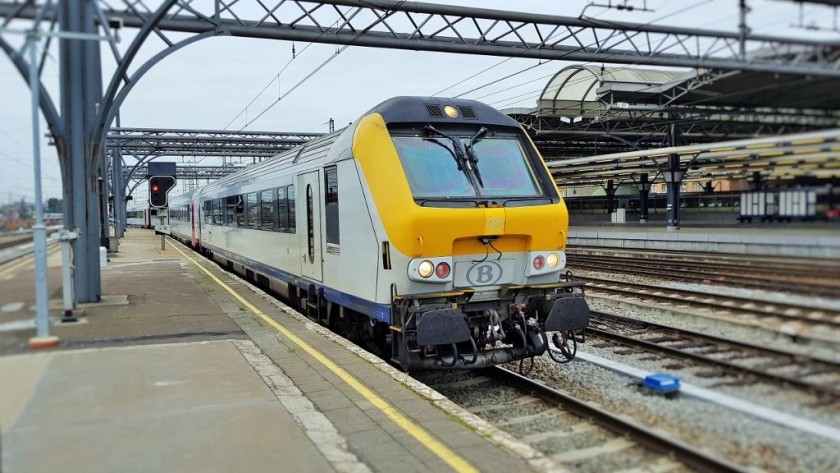
Prior to the launch of the M7 coaches (see above), these I11 coaches offered the top-tier service on the Belgian Intercity trains, but they have now been mainly switched to the EuroCity services on the Bruxelles - Rotterdam route.
Hence they are now only typically used on these two routes:
- Oostende - Brugge - Gent-Sint-Pieters – Brussels-South/Midi – Brussels-Central – Brussels-North - Leuven – Liège-Guillemins - Verviers-Central –Welkenraedt - Eupen
- Brussels-South/Midi – Brussels-Central – Brussels-North - Brussels-Luxembourg - Namur - Arlon - Luxembourg
Though on these routes most of the coaches on the train will be of the double-deck type, with these single-deck trains at one end of the train.
An unusual feature of these coaches is that power sockets are only available in the bays of seats at the end of the coaches, inside the doors.
3 - Other single-deck trains:

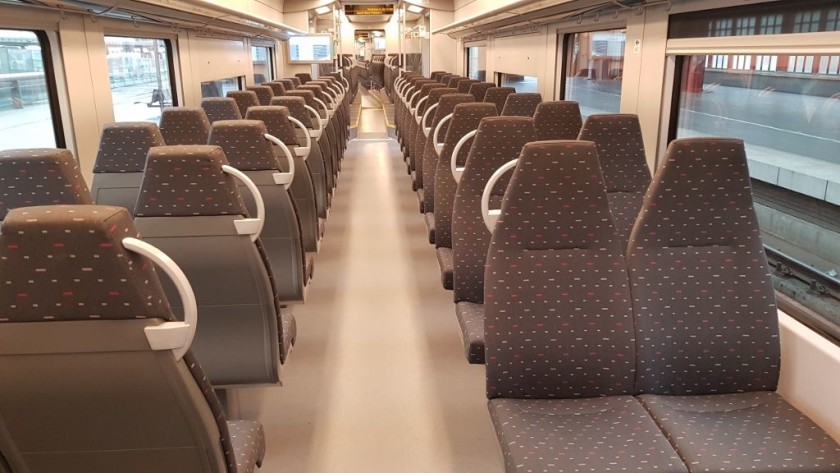
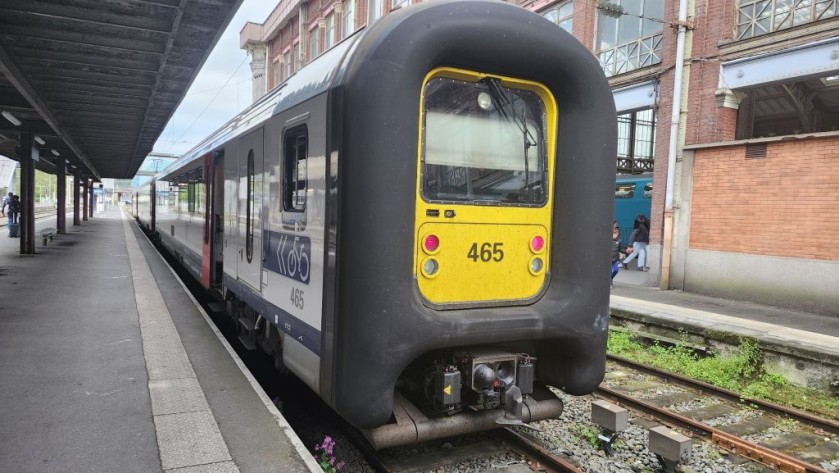
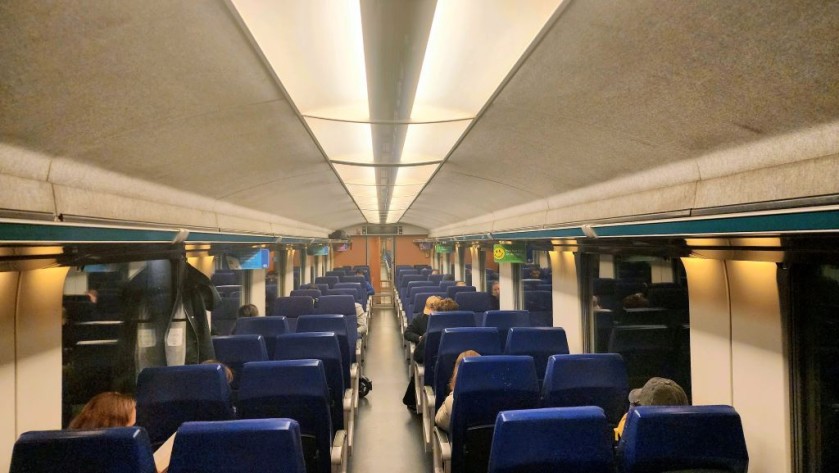
These are single deck trains with driving cabins at each end of the train - these trains don’t need locomotives so the technical name for them is E.M.U.s.
Some of the trains in this category, the 08 trains, are also used for regional routes and are therefore comparatively cramped – and they have limited luggage space.
The difference between the ambience in 1st and 2nd class is also comparatively marginal - the core advantage of booking 1st class tickets to travel by these trains is the increased opportunity to find available seats.
The internal images above are of 2nd class seats.
The routes that that these type of trains usually operate on INCLUDE:
- Lille - Tourcoing - Mouscron - Kortrijk - Gent - Antwerpen
- Lille - Tournai - Mons - Charleroi - Namur
- Poperinge - Ypres - Kortrijk - Gent - Antwerpen
- Oostende - Brugge - Kortrijk - Gent - Antwerpen
- Mons - Bruxelles
Travel experience summary:
NMBS/SNCB takes a no-frills, functional approach to its IC trains, but as very few journeys take more than a couple of hours, the lack of a wow factor doesn’t matter at all.
Food/drink cannot be purchased on these trains and they don’t have Wi-fi
Plusseats cannot be reserved on Belgian InterCity trains.
Bicycles:
All trains within Belgium are operated by SNCB and it charges a flat fee of €4 per journey per bike, you can buy these tickets at the station from ticket counters or machines.
Your passenger and bike tickets won’t be specific to a particular departure, because SNCB doesn’t offer reservations on its trains.
What is vague is that the conductor on the train will apparently show you where to place your bike on the train – not all of SNCB's trains have designated bike spaces.
The travelling with bikes page on the SNCB website has limited info, but the suggestion that you should travel outside peak times, implies that there is a possibility that the conductor will prevent bikes from being allowed on to exceptionally busy trains.
Also some trains will be lengthy with more than six coaches/carriages/cars, so the conductor may be hard to find.
So check with the booking clerk, or at the information desk, what you’ll need to do and where to wait, before making your way to the platform/track that your train will be leaving fr
This second version of ShowMeTheJourney is exciting and new, so we are genuinely thrilled that you are here and reading this, but we also need your help.
We’re striving not to let anything get in the way of providing the most useful service possible, hence a facility has been set up with DonorBox which can be used to support the running costs and make improvements.
Instead of advertising or paywalls, your financial support will make a positive difference to delivering an enhanced service, as there’s a lot of ideas which we want to make happen.
So if you have found the info provided here to be useful, please consider saying thank you.

This is one of more than 100 train travel guides available on ShowMeTheJourney, which will make it easier to take the train journeys you want or need to make. As always, all images were captured on trips taken by ShowMeTheJourney.





